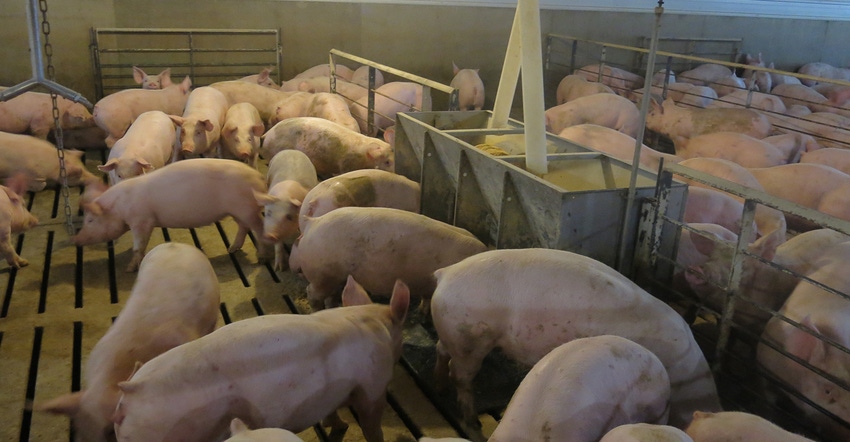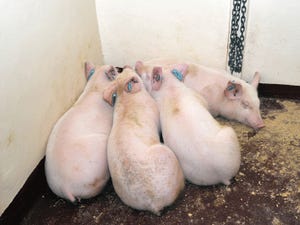Uncertainty, fear, record large production equals lower hog prices
The rally's extent could be surprising but given the level of production, there's no reason to expect anything close to last year's highs.
February 3, 2020

The above title is the John 3:16 of the hog market … it kind of says it all. The marketplace is gripped with fear and uncertainty, and this resulted in massive selling of lean hog futures during the week ending Jan. 31. Never mind that 65% of the Chinese hog herd has been lost to disease.
The bottom line is that ramped-up production is keeping up with rising exports. The end result, so far, is that per capita pork supply remains largely unchanged from last year. Indeed, the industry is bent on challenging demand to the hilt. Then, when there's any kind of hiccup, or presumed hiccup in demand such as generated by the coronavirus panic, prices come unglued. Production, record large production, is set in stone, demand is not. If demand, or the perception of demand changes, if it is lowered, prices collapse.
The December Hogs and Pigs Report indicated, for the fifth consecutive year, that the Dec. 1 inventory of market hogs was the highest since the series began in 1963. Dec. 1 breeding numbers were up 2% versus the previous December and this report marked the 15th consecutive year-over-year increase in quarterly breeding numbers since there was a decline in numbers … all the way back to March of 2016. The industry was knee deep in expansion 16 months ago, when African swine fever was first reported in China, and it remains knee deep in expansion despite the "high-risk" situation and in fact the disaster that would occur if ASF ever makes its way to North America. The bet is being placed, big time that the U.S. herd will remain disease-free.
Eventually, as Asia begins to recover from ASF, and world pork production begins to rise, U.S. prices can be expected to free fall to a level low enough for long enough to stop expansion and initiate a deep contraction. One can only hope this situation is a couple of years or more down the road.
In the short term, a definite fear and high level of uncertainty has ushered in huge selling, driving hog futures to sharply lower levels. This has occurred in spite of and in the face of ramped up export business. While the dramatic increase in U.S. pork exports has been impressive, the bottom line is the fact that per capita supply remains largely unchanged. Until exports reach 30% to perhaps 35% of total production, hog prices will struggle. This is the key ingredient I've admittedly missed over the last 12 months. The rise in production has exceeded my expectations and the rise in exports, much slower to develop than anticipated, has not reached my expectations. The surge in exports is coming, no doubt, but it's taken far longer to develop and materialize than what I expected. The trade war, of course, has been a major hurdle.
Sorting out the coronavirus and the impact on China, Chinese meat consumption and the eventual impact on global economic growth will take weeks and perhaps months. The Chinese government has major problems to deal with. First, ASF causing food price inflation and food insecurity, followed by protests in Hong Kong posing a direct challenge to their form of government only to be topped off by a major health scare in the form of a coronavirus. It's my opinion they'll drop all barriers to meat imports in a desire to solve the food insecurity problem as they grapple to contain the virus.
If this theory is correct, there are only two obstacles in the road. The first is Feb. 15 which is when phase one officially goes into effect and the second is the outcome of President Trump's impeachment trial. If, on Feb. 15 President Trump is not impeached, odds favor an abrupt and aggressive food-buying binge to begin.
Regardless of the rising level of U.S. pork exports, if numbers don't drop off, hog prices will fail to ignite. Hog slaughter for the six weeks from Dec. 1 to the middle of January was up 4.2% versus last year. However, the quarterly Hogs and Pigs Report suggested 7% more market hogs during this period. During the following three weeks, the kills have been ramped up to 8.5% larger than the same period last year. Last week's hog kill was up 14% from last year. The Hog and Pigs Report indicated numbers should only be up 4.6% during this period. So during December and on either side of the holiday's the kill was lower than it should have been and then the following four weeks it ran above expectations. By the end of February and into March, the data indicate that numbers should taper off to only 102% of last year. If this occurs, while weights are declining as the industry is weaned off ractopamine, and if U.S. exports to China continue to rise, one should expect a bottom in hog prices.
The extent of the rally could be surprising to most but given the level of production, there's no reason to expect anything close to last year's highs. The expansion has simply been too great.
Finally, returning to the coronavirus situation in China, China has long been an incubator for new and unpredictable flu viruses. China is blamed for the 1918-19 Spanish flu, the Asian flu in 1957, the Hong Kong flu in 1968, the Russian flu in 1977 and of course severe acute respiratory syndrome in 2003-04.
Should we be so shocked, should we be so fearful? While still developing, thus far this coronavirus, and whatever name they eventually give to it, is far less deadly than was SARS. The SARS virus killed nearly 10% of those infected. Data so far, although still early in the game, indicate a kill percent of 2% for this coronavirus. In addition, within a week of the spread of the virus, Chinese authorities shut down several major cities, basically preventing about 50 million people from leaving town and potentially spreading the virus further. The World Health Organization has endorsed the plan as sound compared to a very slow response that occurred during the SARS outbreak.
Containment will take some time, likely from 30 days to a few months. It's highly likely the Chinese government will attempt to quickly solve one major problem, food inflation and insecurity, as they battle to contain this virus. Previous barriers to doing this, such as a trade war and a president facing an impeachment trial, should soon disappear. The hog market looks really bad at this moment. It always looks bad, it always looks its worst, when close to the bottom.
Source: Dennis Smith, who is solely responsible for the information provided, and wholly owns the information. Informa Business Media and all its subsidiaries are not responsible for any of the content contained in this information asset.
About the Author(s)
You May Also Like





